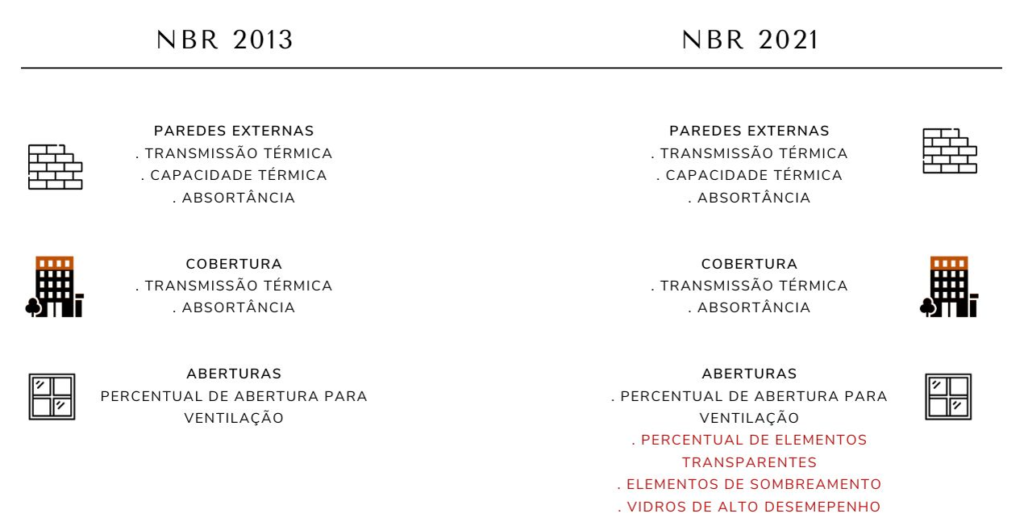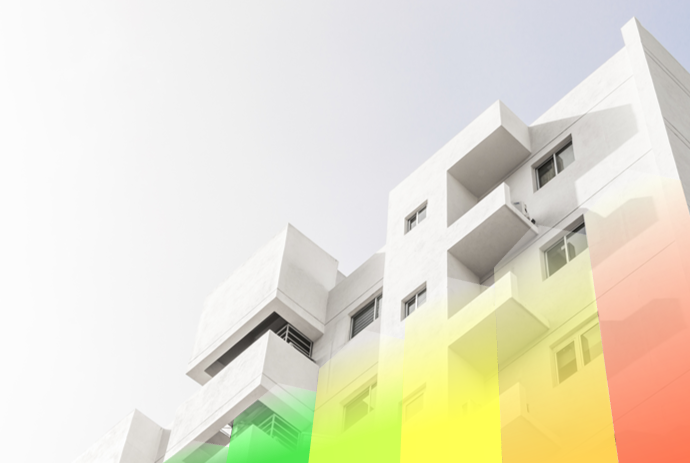When it comes to single- or multi-family residential buildings, the comfort of residents inside the housing units is something that must be considered from the architectural design stage; after all, it is in the houses and apartments where we spend most of our lives. For this, construction professionals must promote design solutions in order to provide thermal, lighting and acoustically comfortable environments for their users.
To be in thermal comfort, in general, the individual must be in an environment with a temperature between 21 and 27ºC. Values below or above this range characterize, respectively, thermal discomfort due to cold or heat. However, such temperature limit values may vary according to the particular characteristics of each person. In addition, many other factors influence the individual's sensation of thermal comfort in the environment, such as the relative humidity of the air, the incidence of winds, their clothing and the activity performed by them in that place. Therefore, it is important to evaluate each building on a case-by-case basis, according to its location, orientation, use and other design characteristics.
The building envelope, for example, plays an important role in the thermal comfort of its users - since they are the medium between the external and internal environment - and each material that composes it has thermal properties and its own characteristics that determine the influence of external conditions inside the building. Therefore, such materials found on the walls, roofs and openings of the building must meet the minimum performance requirements stipulated in ABNT NBR 15.575, recently updated.
About the Norm and its changes
The Brazilian Performance Standard No. 15.575, published for public consultation in 2008, and later published in 2010, became mandatory in 2013 for all new residential buildings, establishing minimum performance requirements for housing environments across the country. In September 2021, the new version of the Performance Standard for thermal and acoustic comfort was published. For evaluation of lighting performance and for new buildings filed up to 180 days after the publication of the new Standard, the 2013 version is still in force. For accommodation buildings, compliance with the Standard is recommended, but not mandatory.
The new Standard presents two methods for evaluating the thermal performance of envelopes: the simplified method – which replaces the old prescriptive method – and the computer simulation method, which allows a more accurate assessment of the building parameters. Through the simplified method, it is possible to obtain only the minimum level of performance. Through the simulation method, however, it is also possible to obtain intermediate and superior levels of compliance with the Standard. In this case, two scenarios should be considered - with and without natural ventilation -, taking into account, in the second, the artificial cooling or heating of areas of prolonged stay. To meet the minimum level, however, the simulation is only necessary under the condition of the presence of natural ventilation. This novelty comes in a context of increasing aggravation of global warming, allowing the thermal comfort of building users when natural ventilation is not enough.
In the simplified method, in general, there have been changes in requirements for indoor and outdoor vertical fencing and roofing systems. In addition to the percentage of opening for ventilation already required in the prescriptive method, the percentage of transparent elements on the facades must also be considered, which consists of the ratio between the glazed area and the opaque wall area. High performance glass can now be used in cases where the percentage of transparent elements is greater than the maximum percentage of compliance with the Standard. With the addition of these variables, the buildings are evaluated with greater precision, since the glazed areas are also considered, and not only the openings. The comparison between these constructive characteristics and reference values described in the Standard determine whether or not the building meets the minimum level of performance required.

Figure 1: Changes in the Simplified Method of NBR 15.575/2021 compared to the Prescriptive Method of the 2013 version. Source: Own elaboration (adapted from LabEEE).
In the simulation method, the results are now given by comparing the parameters of the real building and a model of the same volume with reference characteristics. The new evaluation criteria are: the inclusion of the complete constructive environment, operable frames and the concept of thermal bridges. Another change is the use of the annual climate file instead of the climate data for only two days of the year – a typical summer day and a winter day –, as was the case in the old version. In addition, ventilation, which used to be a fixed rate, now depends on the speed and direction of the wind, becoming closer to the real condition of the building implementation.

Figure 2: Simulation Method of NBR 15.575/2021. Source: Own elaboration (adapted from LabEEE).

Figure 3: Changes in the Simulation Method of NBR 15.575/2021 compared to the 2013 version. Source: Own elaboration (adapted from LabEEE).
Before, only critical housing units could be considered – usually located on the top floor of the building, below the roof – in order to simplify the process. In the new method, all units, including standard floors and other typologies, must be included in the simulation. In addition, only bedrooms and living rooms were considered in the old Standard, while kitchens and integrated circulations were at the evaluator's discretion, even if they were integrated into the analysis environments. In the new version, these environments are also obligatorily considered in the evaluation, if they are integrated.

Figure 4: Indicators and Performance Levels of NBR 15.575/2021. Source: Own elaboration (adapted from LabEEE).
What can we expect for Norma's future?
As occurred in 2021, the Standard may still undergo further revisions over the years, given the proven need to adapt to climate change and new technologies available, also aiming to improve assessment methods. The future of the Performance Standard involves the revision of the item referring to the luminous performance, the standardization for buildings of other typologies - such as, for example, commercial buildings -, the revision of the Brazilian bioclimatic zoning and the integration with the metamodel of the Brazilian Labeling Program of Buildings (PBE Edifica). In this way, we seek to design buildings that are increasingly sustainable and energy efficient, in line with the growing needs of cities to promote the thermal comfort of their population with minimal environmental impact.
Comments are closed.

